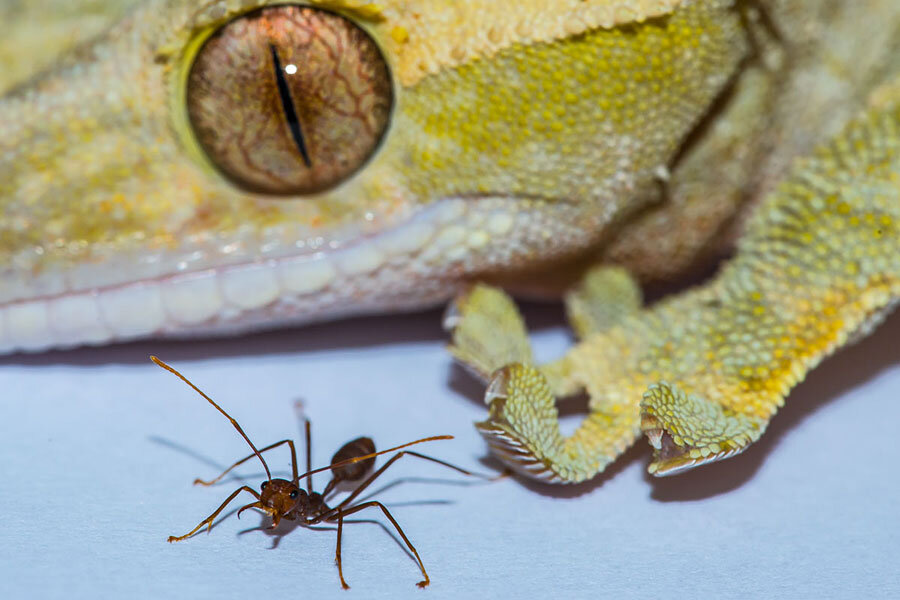How geckos might show there's no such thing as Spiderman
Loading...
Sorry Spiderman fans, but scientists may have disproved his signature move. Humans are too big and have too small feet to climb a wall like a spider, according to a new study.
Hundreds of smaller animals, from tiny mites to geckos, have adhesive footpads that help them scale a vertical wall or other tricky surface. But new research suggests that the bigger the animal, the larger their sticky footpads must be.
In fact, the scientists say, geckos are the largest animals capable of Spiderman-like maneuvers because of this sticky surface-to-body-size relationship. A human would need to have adhesive pads on about 40 percent of their body to scale a smooth wall with the same ease, according to the new paper published Monday in the journal Proceedings of the National Academy of Sciences.
"If a human, for example, wanted to climb up a wall the way a gecko does, we’d need impractically large sticky feet – and shoes in European size 145 or US size 114," study senior author Walter Federle said in a news release.
It comes down to a greater gravitational pull of the larger animal.
"As animals increase in size, the amount of body surface area per volume decreases – an ant has a lot of surface area and very little volume, and an elephant is mostly volume with not much surface area," study lead author David Labonte explained.
"This poses a problem for larger climbing animals because, when they are bigger and heavier, they need more sticking power, but they have comparatively less body surface available for sticky footpads. This implies that there is a maximum size for animals climbing with sticky footpads – and that turns out to be about the size of a gecko."
But there may still be hope for Spiderman wannabes. The scientists did notice a few animals whose sticky footpads did not increase as fast as they should compared to similar species. Instead, the pads themselves get stickier.
"We found that tree frogs have switched to this second option of making pads stickier rather than bigger," study coauthor Christofer Clemente said. "It’s remarkable that we see two different evolutionary solutions to the problem of getting big and sticking to walls."







